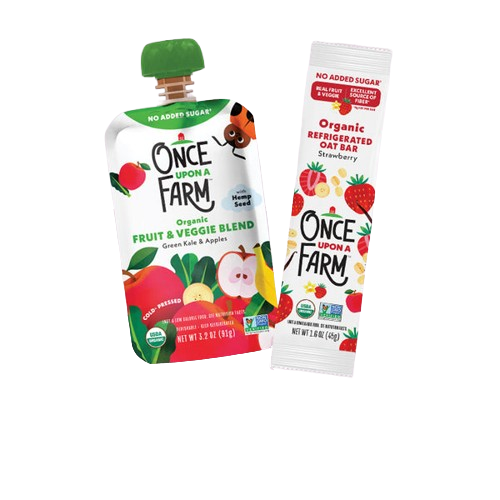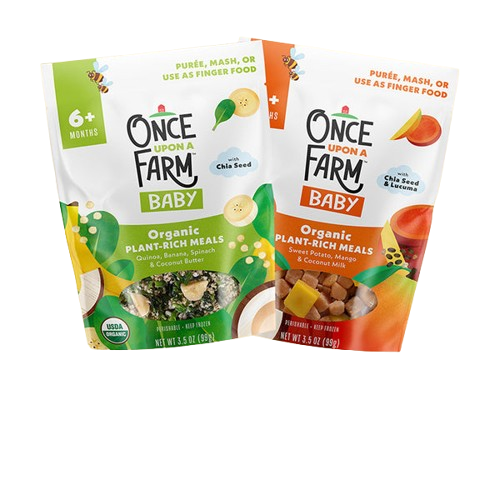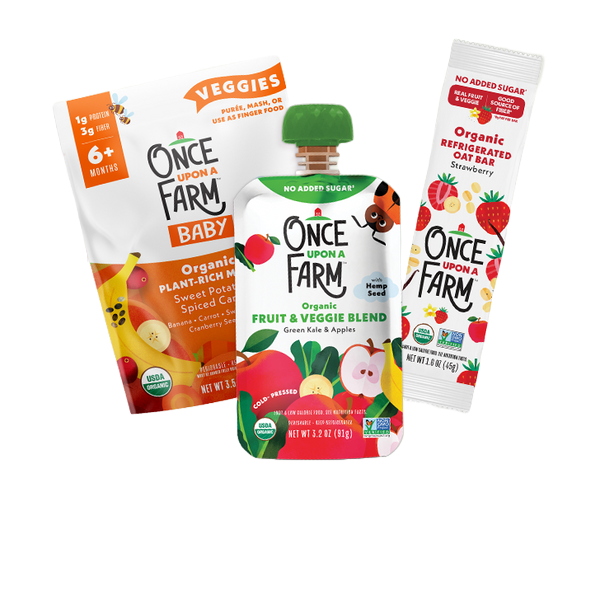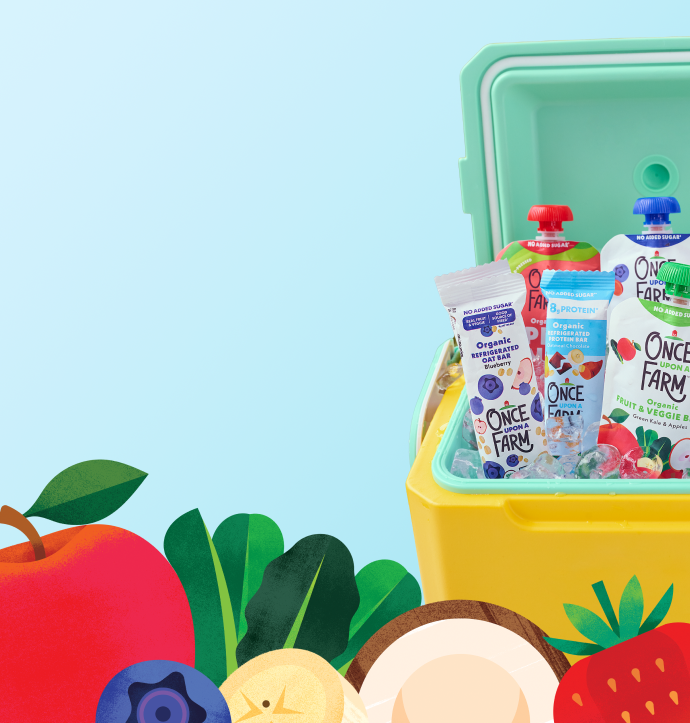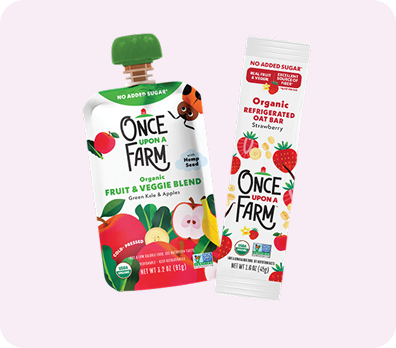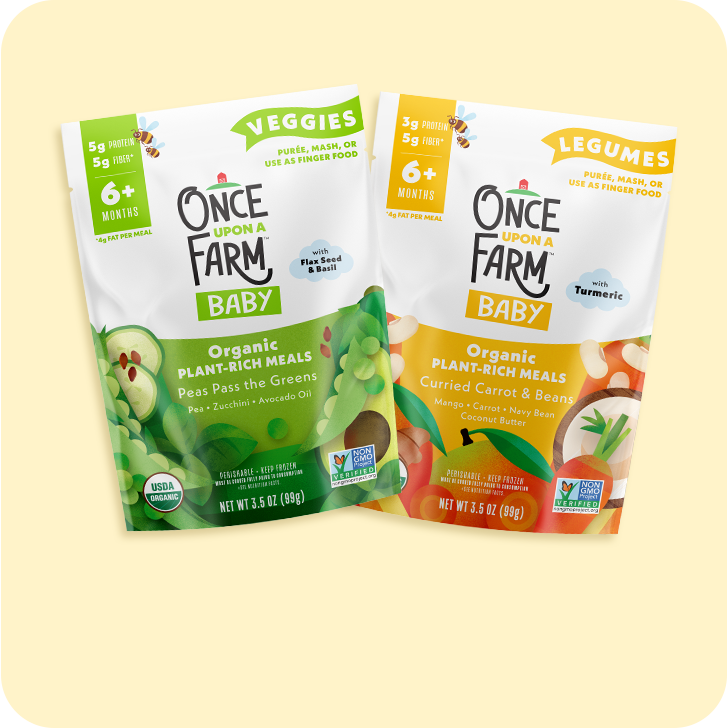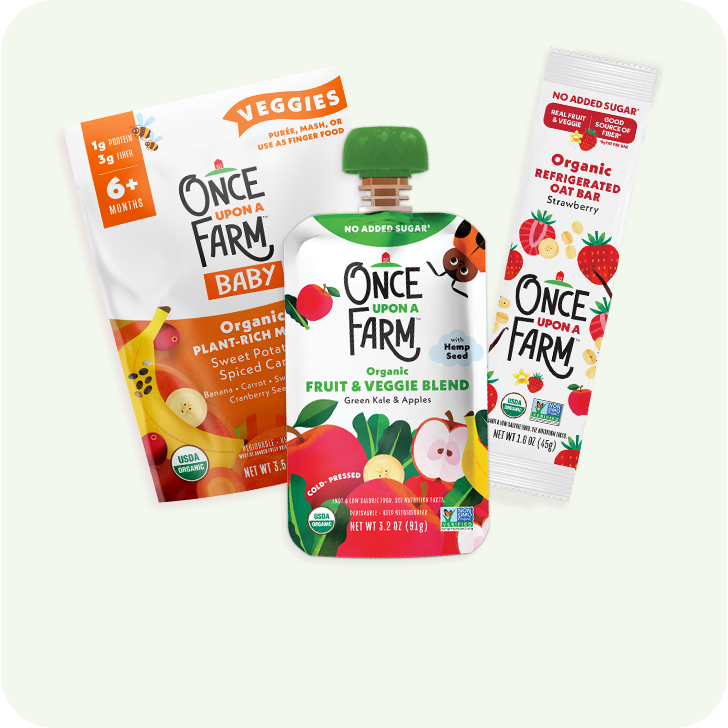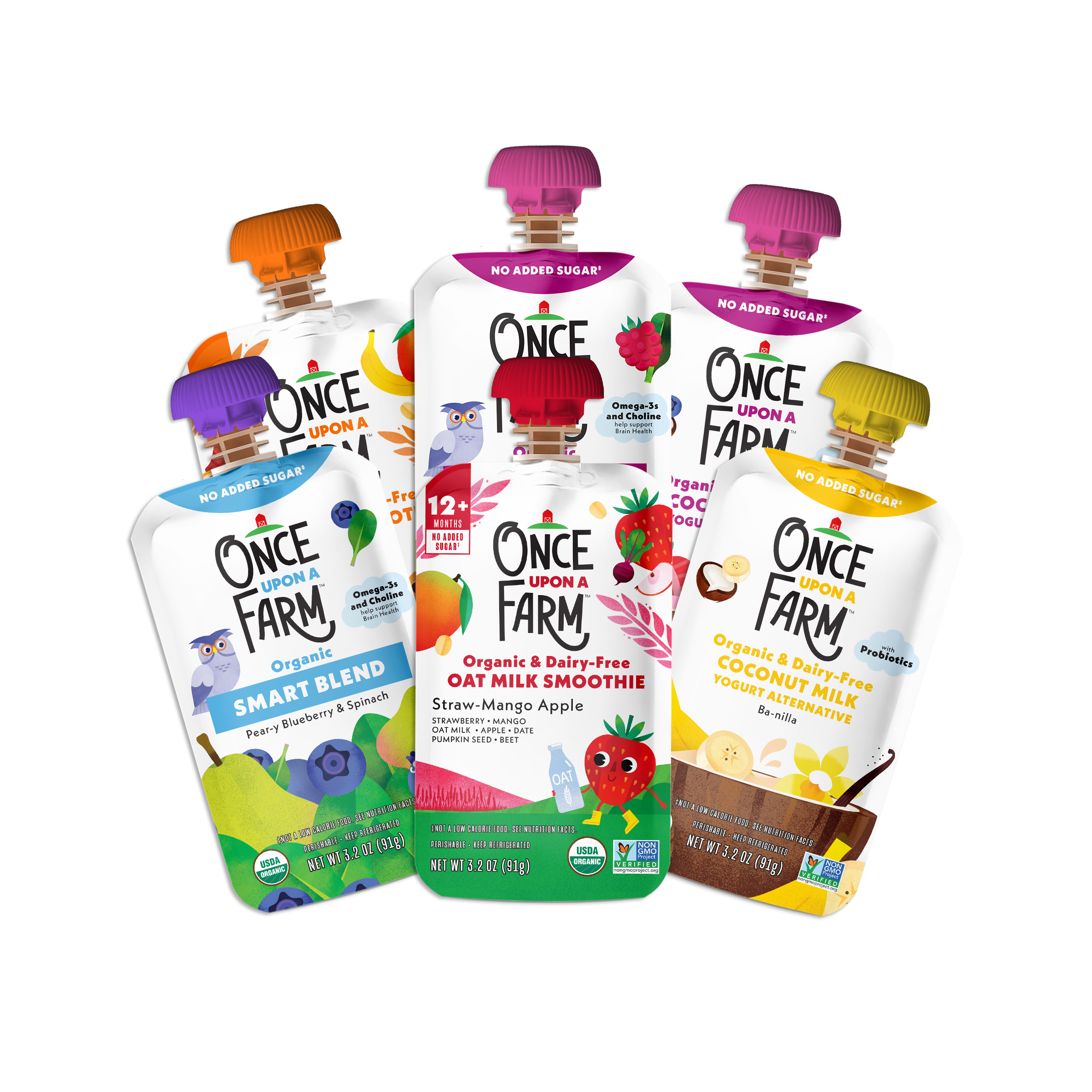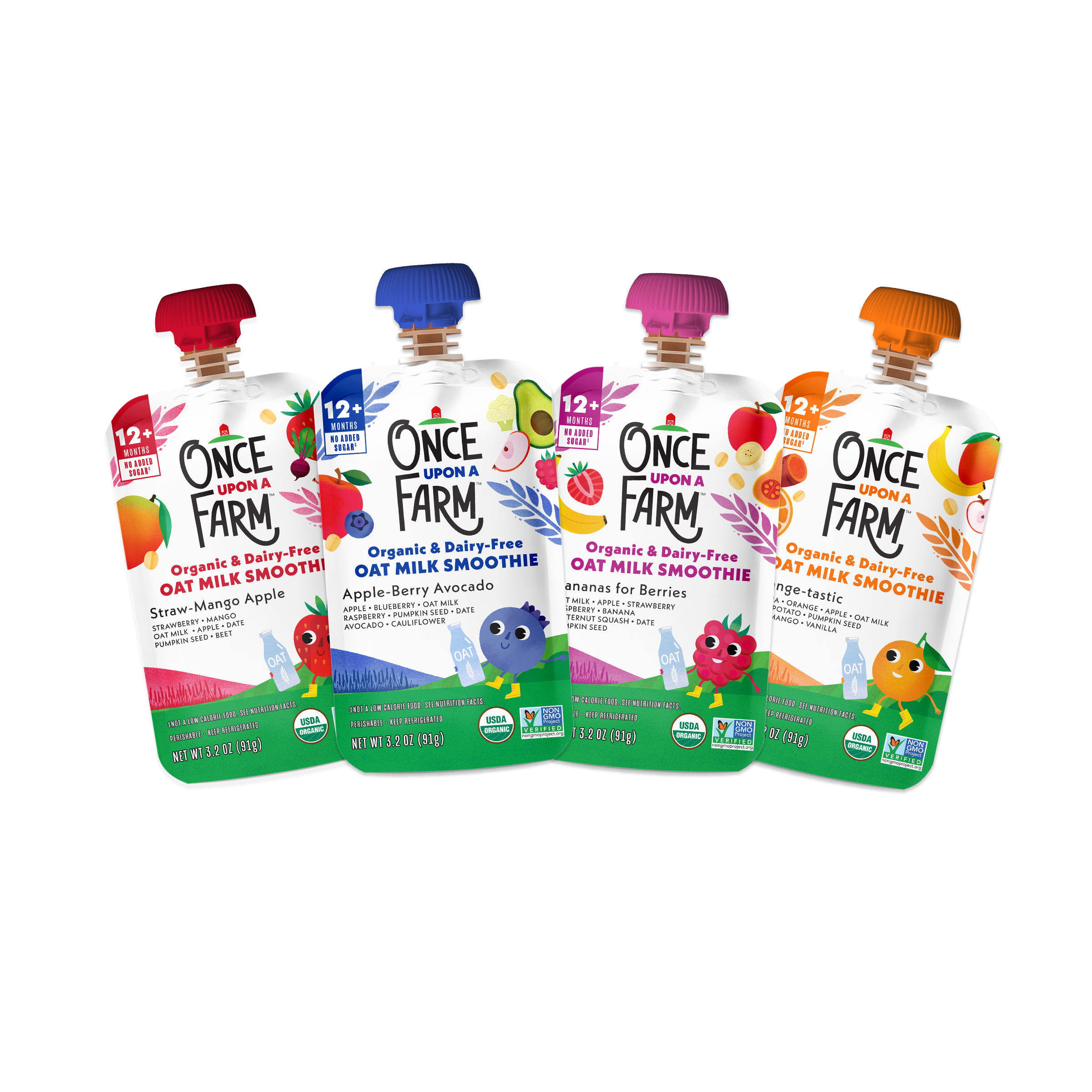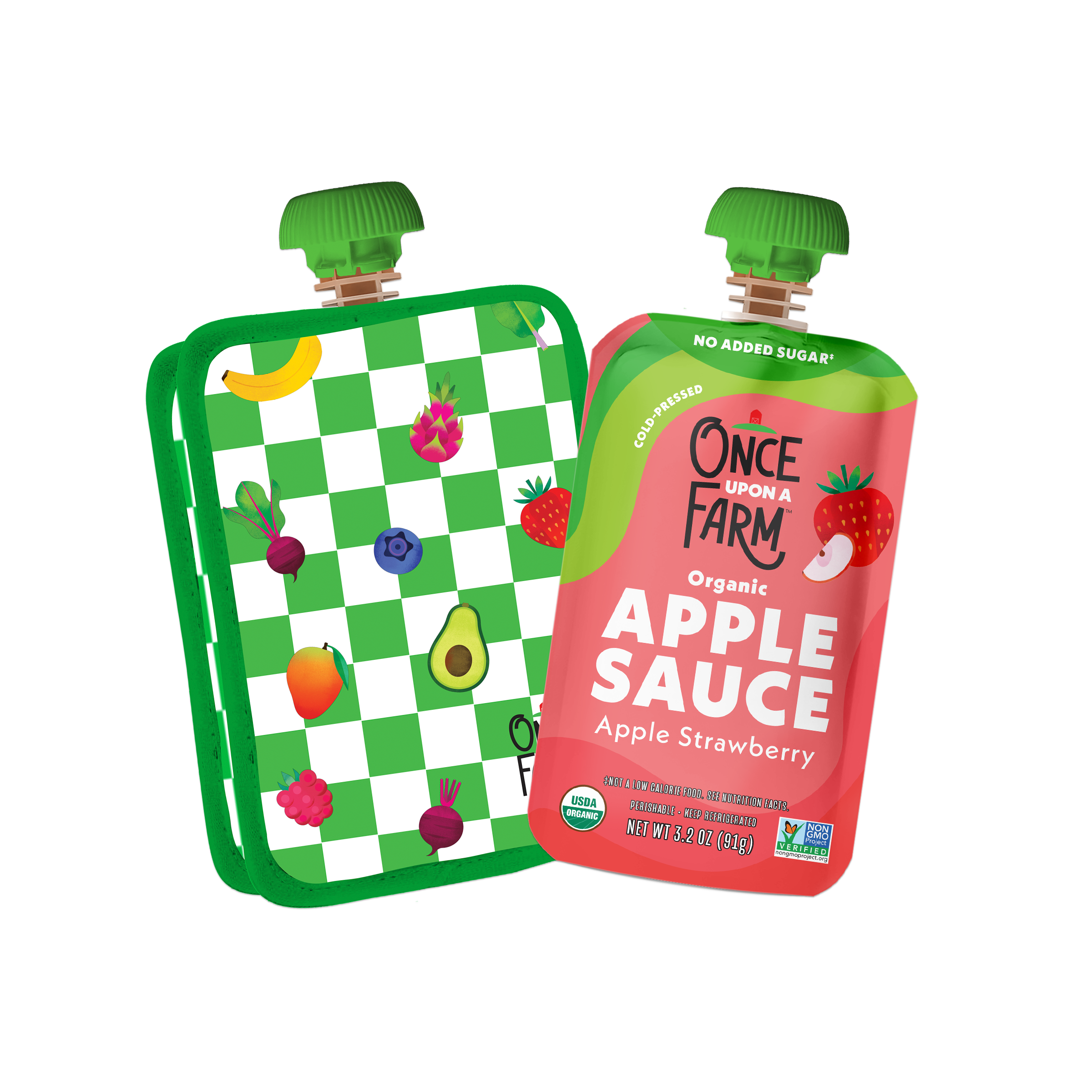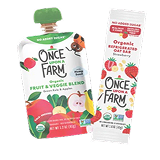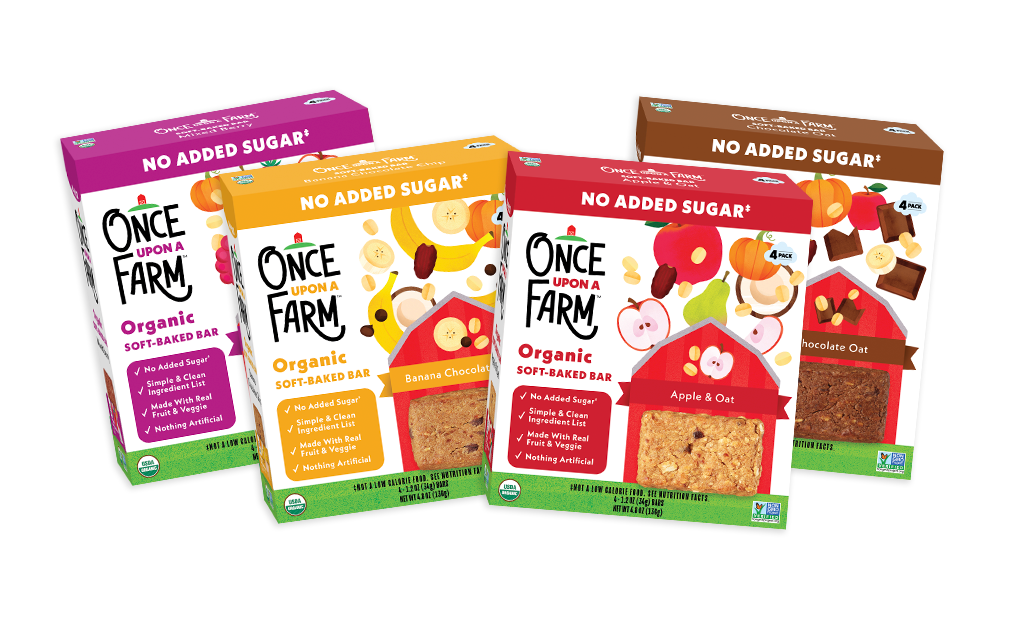Note: This blog is not medical advice and is for informational purposes only. For any specific questions or concerns, please refer to your child’s pediatrician or healthcare provider.
Sugar is one of those confusing topics for parents. Is it bad? Are certain types better than others? What about sugar from fruits and veggies? When is it safe to introduce sugar to our kids? Here to help address those questions and more is mom of two and pediatrician Dr. Krupa Playforth, M.D. (@thepediatricianmom).
The following is written by Dr. Playforth:
Nutrition in the first 1,000 days of life is uniquely important. This is a time period of immense growth, development, and habit-formation. Focusing on high-quality nutrition in this time period may have implications for your child’s whole life.
So, what does high-quality nutrition mean?
The truth is, many guidelines make this concept far more complicated than it needs to be. And what parent has the time for that? So we’ll keep it simple:
- For children under 2 years, focus on limiting added sugar/processed foods and offering variety in the form of fruits and vegetables.
- For those who are older, where you may have less control over their intake, if you can stick to these same goals at least 75% of the time, you’re way ahead of the curve. For the remaining 25% of the time, recognize that most things in moderation are probably okay.
What is added sugar?
Added sugars are sugars that are added to foods during processing to sweeten them. The FDA defines these as, "foods packaged as sweeteners (such as table sugar), sugars from syrups and honey, and sugars from concentrated fruit or vegetable juices. They do not include naturally occurring sugars that are found in milk, fruits, and vegetables."
Even if these products occur naturally (like maple syrup), they don’t add nutrient density to the foods and are broken down quickly in the same way as any other added sugar. They can cause blood sugar to spike, which leads to a rapid burst of energy followed by slump.
But what about naturally occurring sugars in fruits & veggies?
Fruits and vegetables contain fructose and dairy products contain lactose. These sugars are not only more nutritious because of the associated vitamins and antioxidants, but they are also metabolized more slowly in the body because of the fiber, which helps with a sensation of fullness. As such, they’re offering more than a blood sugar spike—they are inherently more nutrient dense.
Note: Once Upon a Farm is particularly thoughtful about added sugar—the pouches contain no added sugar, and include whole fruits and veggies, which contain fiber.
Why is added sugar a concern?
Consistently, studies reveal that US sugar consumption across all ages is far higher than it should be. And it makes sense: humans (even infants) have natural taste preferences for sweet foods. But for all of us, the emphasis should be on providing nutrient-dense foods. Sugar easily can take the place of more nutritious foods—and excessive consumption of added sugars is associated with long-term health problems.
But let's be realistic...
There are times in our lives when added sugar is unavoidable. Birthday parties and family holidays are often centered on food. And sometimes you just need a convenient grab-and-go snack for your child, even if it is processed and you know it contains added sugar.
Balancing the guidelines with real life can be tricky. So, how should a modern day parent approach these recommendations?
Recognize that extremes are rarely reasonable or practical. Excluding sugar entirely would be a challenge. If you can make thoughtful choices most of the time, then that extra 10–15% of the time matters less.
Some ways to make thoughtful choices around added sugar include:
- Learn to read labels (alternative names for sugar can include: high fructose corn syrup, agave nectar, corn sweetener, sucrose, fruit juice concentrate, brown rice syrup, sucrose, honey and more)
- Pick snacks that do not include added sugar, such as plain yogurt or O’Farm pouches.
- Don’t buy juice. Offer whole fruits, which are nutrient-dense and fiber-rich instead. Berries are an easy and convenient grab-and-go snack.
- Model good eating choices. We often make better choices for our children than we do for ourselves. But our kids learn best by watching what we do, rather than listening to what we say!
Balance is everything
In food, and in life, balance is key. Teaching our children that there are no “bad” foods is an important skill to help prevent problematic food relationships in the long-term. And offering healthy choices in those first two years—when they don’t know any better—helps set your child up for better food preferences in the long-term.
But it IS okay to relax sometimes. Let them eat cake!
Dietary Guidelines Advisory Committee. 2020. Scientific Report of the 2020 Dietary Guidelines Advisory Committee: Advisory Report to the Secretary of Agriculture and the Secretary of Health and Human Services. U.S. Department of Agriculture, Agricultural Research Service, Washington, DC.
Fidler Mis N, Braegger C, Bronsky J, Campoy C, Domellöf M, Embleton ND, Hojsak I, Hulst J, Indrio F, Lapillonne A, Mihatsch W, Molgaard C, Vora R, Fewtrell M; ESPGHAN Committee on Nutrition:. Sugar in Infants, Children and Adolescents: A Position Paper of the European Society for Paediatric Gastroenterology, Hepatology and Nutrition Committee on Nutrition. J Pediatr Gastroenterol Nutr. 2017 Dec;65(6):681-696. PMID: 28922262.
Vos MB, Kaar JL, Welsh JA, Van Horn LV, Feig DI, Anderson CAM, Patel MJ, Cruz Munos J, Krebs NF, Xanthakos SA, Johnson RK; American Heart Association Nutrition Committee of the Council on Lifestyle and Cardiometabolic Health; Council on Clinical Cardiology; Council on Cardiovascular Disease in the Young; Council on Cardiovascular and Stroke Nursing; Council on Epidemiology and Prevention; Council on Functional Genomics and Translational Biology; and Council on Hypertension. Added Sugars and Cardiovascular Disease Risk in Children: A Scientific Statement From the American Heart Association. Circulation. 2017 May 9;135(19):e1017-e1034. Epub 2016 Aug 22. PMID: 27550974

